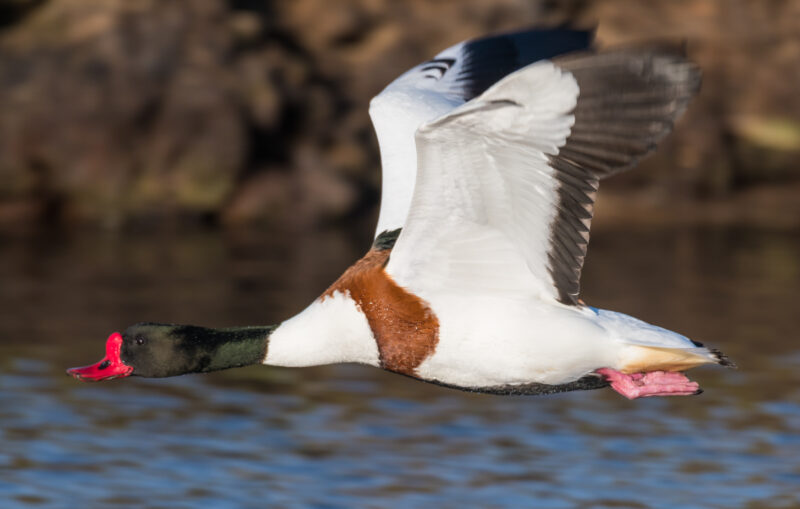Ducks fly south for the winter to escape the cold and find food. This migration ensures their survival during harsh conditions.
Ducks are known for their remarkable migratory patterns, primarily driven by the instinct to seek out warmer climates as temperatures drop. These waterfowl navigate to regions where water bodies are not frozen and food sources like aquatic plants and small fish are abundant.
Instinctual behaviors guide them across vast distances to maintain their delicate life cycle. This journey is a compelling example of nature’s adaptability and the importance of seasonal migration for many bird species. By understanding their behavior, we can appreciate the complexities of wildlife survival and the interconnectedness of global ecosystems.

Credit: newsroom.taylorandfrancisgroup.com
The Fascinating World Of Duck Migration
The evolution of migration in ducks is a remarkable adaptation for survival, allowing them to access resources and favorable climates throughout the year. This pattern is a result of generations of natural selection, ensuring only ducks that could successfully navigate to hospitable environments would thrive and pass on their genes.
Types of bird migration vary greatly among different species. Ducks primarily engage in seasonal long-distance migration, typically traveling from breeding grounds in the north to warmer southern regions during the winter. This movement is essential for conserving energy during colder months when food is scarce.
The role of instinct is pivotal in the migration of ducks. From the moment they hatch, ducks are ingrained with navigational cues and a strong compulsion to follow specific migratory routes. These innate behaviors are triggered by environmental changes such as temperature drops and reduced daylight hours, prompting their journey to more hospitable conditions.
Tracking The Migration Of Ducks
Ducks migrate southward during winter primarily to find better food resources and milder climates. Avoiding the harsh conditions of the north, ducks follow specific routes, often known as flyways, that have been used for generations. These include the Atlantic, Mississippi, Central, and Pacific flyways in North America. Navigating such long distances remains one of nature’s enigmas, with studies suggesting a combination of genetic instinct, celestial navigation, and landmarks as guides.
Recent shifts in climate patterns have led to noticeable changes in duck migration. Warmer temperatures and altered landscapes impact the timing, routes, and distances of migratory journeys. Ducks that once migrated long distances now may spend winters closer to their breeding grounds due to the availability of open water and food sources in previously inhospitable areas during winter.
The ability of ducks to navigate with precision across continents has intrigued scientists for ages. It is believed that ducks might use the sun and stars for orientation, changing their courses with the seasons. The Earth’s magnetic field might also play a crucial role in assisting ducks with their directional cues, aiding them in their epic annual voyages.
Environmental Impact Of Duck Migration
Ducks migrate south for the winter primarily due to decreasing temperatures and the scarcity of food sources in their northern habitats. This annual journey plays a crucial role in ecosystems along their migratory paths. The presence of ducks during migration can affect local species and plant life, potentially leading to increased biodiversity.
Concerning conservation efforts, the movement of these waterfowl is a subject of study and environmental analysis. Organizations dedicated to wildlife protection use data from duck migrations to adjust conservation strategies and ensure the survival of various duck species. Tracking migrations helps in identifying critical habitats that require protection or restoration.
Sustainable development initiatives take into account the habitat needs of migratory ducks to minimize conflict with human activities. Ensuring the preservation of wetlands and other key areas is vital for the continued success of duck populations and the ecological balance they help maintain. Policymakers and developers collaborate with conservationists to integrate wildlife preservation into their plans.
Frequently Asked Questions
Why Do Ducks Migrate In Winter?
Ducks migrate during winter to find more abundant food sources and milder climates. This seasonal movement helps them survive as food becomes scarce and temperatures drop in their breeding areas.
How Far Do Ducks Travel South?
Ducks can travel thousands of miles to reach their wintering grounds. The exact distance varies by species, but many migrate between breeding areas in the northern regions and wintering spots in the southern latitudes.
Do All Duck Species Fly South?
Not all duck species fly south. Some ducks, such as the mallard, are adaptable and may stay in northern areas if open water and food are available. Others have strictly defined migration patterns.
When Do Ducks Start Their Migration?
Ducks typically start their migration at the onset of colder weather, which can vary from late summer to early winter. The timing of their departure often coincides with temperature changes, food availability, and daylight hours.
Conclusion
Ducks migrate to warmer climates during winter for survival. Their journey south ensures access to abundant food sources and milder weather. Understanding this behavior helps us appreciate nature’s complexity and migratory birds’ resilience. Take a moment to marvel at their instinctual voyage as they grace the skies each season.
